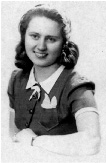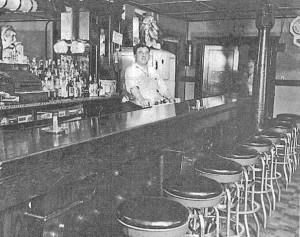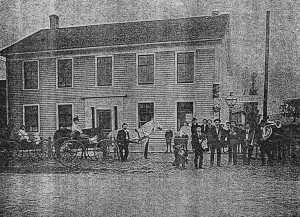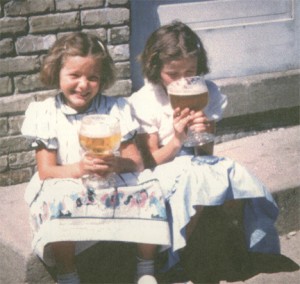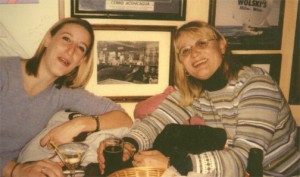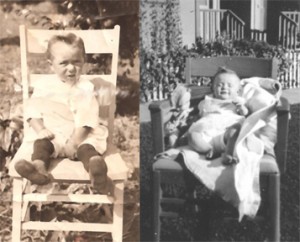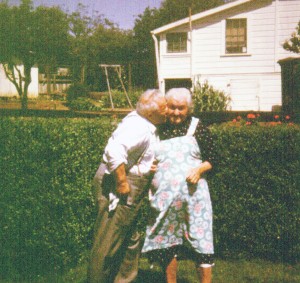HAPPY 21st BIRTHDAY STEPHANIE
Author Archives: Lorna
A little about Dalsland
Dalsland
Dalsland is a Swedish province or landskap, situated in Gotaland in southern Sweden, Lying to the west of Lake Vanern it is bordered by Varmland to the north, Vastergotland to the southeast, Bohuslan to the west, and Norway to the northwest. It is from here that our Swedish family came.
The original name of Dalsland was “Dal” – “Dalsland” was not used until the 19th century. Dal literally means “Valley
No other part of Sweden has its area covered with as many lakes as Dalsland does. Of its total area. Lake Vänern (Sweden’s largest lake) is in Dalsland Province province. From the shores of Vänern, one can sail through the river systems up to the mythical lake Stora Le. Stora Le is within Dalsland, and the remaining part within the Värmland province, with a bay into Norway. 1/4 of the land, in the southern part of the province, is suitable for agriculture and the other 3/4 is forested.
Dalsland’s exposed location near the Norwegian border made it subject to invasion, although to a lesser degree than the southern Bohuslän and Västergötland. It was first conquered around 1100 by the Norwegian Magnus Barefoot, who only held until King Valdemar Atterdag re-drew the provincial borders.
Our ancestors came from this part of Dalsland
Dals-Ed
Edstrom ancestors came from the western part of Dalsland known as Dals-Ed and were believed to have migrated from Bohuslän, although probably long before that area was Norwegian. A distinctive feature in the Högsäter-area of Valbo Hundred was an inclination to brown eyes and dark hair, and a slightly rounder facial shape.
Where the name EDSTROM came from
One of the Swedish surname naming practices was to abandon the patronymic system (father’s first name plus son or dotter added -Persson-Persdotter) and identify yourself by where in the province you lived. Our ancestors lived near the stream (Strom) of Dals-Ed, and so the name “Edstrom” was born.
Distant Cousins?
FAMIGLIA di SCALCINI
We know next to nothing about Nonno’s great grandparents and grandparents except that Scalcini’s were known to live in the Sondrio region of Italy, near Morbegno. On March 8, 1849 Carlo Scalcini appeared in the Opera “Giselle” at La Scala. Cesare Scalcini, from Morbegno, was a design engineer and in 1861, created the plans for a castle of wood that housed the new concert bells for the parochial church and Agostino Scalcini was a councilman of Morbegno from 1864-1887.
Col. U. Scalcini and Leopolde Scalcini
World War II brings us two more Scalcini’s, one in the Italian Army and the other in the Italian Resistance.
Col U. Scalcini served with the Italian army 52nd Infantry regiment in a campaign in Ribnica in the Province of Ljubijana, September 2, 1943. During this campaign many crimes of war were committed against the people of Ljubljana There is still a group documenting this part of World War II.
On the opposite side of the coin, Leopolda Scalcini, with the Italian resistance during WWII, was instumental in keeping the Spluga Pass through the mountians of Italy into Switzerland open. He was a resistance officer of artillary in the first group of partisans in Colico in the Valtelina defending the pass into Switzerland. He was captured with 34 other partisans at the cabin of St. Peter. The 34 were executed on December 29, 1944 as they tried to escape.
On December 31, 2005 a plaque was dedicated commemorating these men’s successful defense of the bridges of the far north.
Two more contemporary Scalcini’s are Alba Cinzia Caldi Scalcini and Gustavo Scalcini. Alba is described in the Provincial News in an article “The Women of Valtellina and Valchiavenna” as a figure of beauty. She was born in Morbegno in 1870. She married a professor of philosophy at the University of Torino. It was here that she began her studies in classic and modern liturature. She was a writer of both prose and poetry. She became an impressive feminine figure in world of publication. She died in 1960. Gustavo Scalcini, is a senior editor of the Argentinian Paper Telam. He has written many articles in the area of animal rights and a major work about the Chilean and Argentinian hero, Calfucura, titled Un Héroe Vuelue a Su Pueblo (A hero Returns to His town) Many emigrants from Pientedo went to find their fortunes in South America, especially Argentina. This points to the fact that Gustavo, too could be a distant cousin. Only more extensive research will reveal our ancestral connection
Annie Scalcini
Annie Scalcini
Anna Scalcini, fair complexioned, brown haired, brown eyed, 5‘5“ ,was the cousin of Nonno and grew up in the same small village in the mountains of Italy as he did. Like her cousin, at age 19, decided to come to America. Sailing out of the Port of Genoa, Italy on the ship Pesaro, Anna arrived in New York City on January 4, 1921. She traveled on to San Francisco to stay with another cousin, Antonio Cortano who lived at 2661 22nd St. Here she met up with another countryman from Sondrio, Michele Adelino (called Mike) Delnero. He had emigrated earlier, leaving Sondrio from the Port of Le Havre, France on the ship La Gasgoyne, arriving on January 21, 1907. He and his two brothers Rocco, 22 and Pompilio 16, headed to the Sacramento area. Soon after Annie’s arrival she married Mike. Mike was a cook and Annie a waitress during their San Francisco days. They moved from San Francisco, living in the Sacramento and San Joaquin valleys, eventually retiring to Castro Valley, California. (By coincidense Christopher’s first babysitter in Castro Valley lived across the street from Annie and Mike.) Mike died in Jun of 1980 at age 90 and Annie died 14 years later on October 3, 1994 at age 92.
A Beer Family
Battista Scalcini
Battista Scalcini
Battista was married to a daughter of the Deghi family and they had at least one child named Anna. Battista made at least two trips to America. The first trip was in 1902 when his daughter was just an infant. He arrived in New York on March 18 and continued on to San Francisco. We do not know how long he remained in America. At some point in time he returned to Italy only to make another trip to the United States in the year 1905. This time he went from New York City to Mendocino County in northern California. This is where he was living when Nonno emigrated to the United States in 1910. Sometime after this, Battista returned to his family in Italy. His daughter Anna had her father’s zest for adventure and she set out for America.
Dad and Me
The Kiss
Domenico Scalcini
Nonno’s ancestors are from two Piantedo families, the Scalcini’s and the Digoncelli’s Little is known about either family and the little that is known leaves many unanswered questions that are still be researched. What we do know is both captivating and intriguing.
FAMIGLIA di SCALCINI
We know next to nothing about Nonno’s great grandparents and grandparents except that Scalcini’s were known to live in the Sondrio region of Italy, near Morbegno. On March 8, 1849 Carlo Scalcini appeared in the Opera “Giselle” at La Scala. Cesare Scalcini, from Morbegno, was a design engineer and in 1861, created the plans for a castle of wood that housed the new concert bells for the parochial church and Agostino Scalcini was a councilman of Morbegno from 1864-1887. Only more extensive research will reveal our ancestral connection.
DOMENICO LORENZO SCALCINI
Nonno’s father, Domenico Scalcini, was born in Piantedo around 1860. He was an agricultural worker. In 1888, he married Maria Ursula Digoncelli, also from the small town of Piantedo. On his wedding day, Maria gave her husband a picture of St. Domenico. The picture has been handed down through the generations and has become a family treasure.
Copy of the picture of St. Domenico given to Nonno’s father by his wife on their wedding day, 1888. Handed on to Nonno by his mother in 1952. Passed on to Paul Scalcini by Nonno in 1957. Given to Christopher Shobar, Nonno’s great grand son, by his Uncle Paul.
Domenico did not live long after his marriage. He died before the January 21, 1889, birth of his son, Domenico Lorenzo. His death presents us with a family mystery. The cause of death remains uncertain. Some accounts say he died in battle but other reports say he died from a fall from a tree. We know that he had at least one sibling, a brother Battista, who lived in Piantedo.





